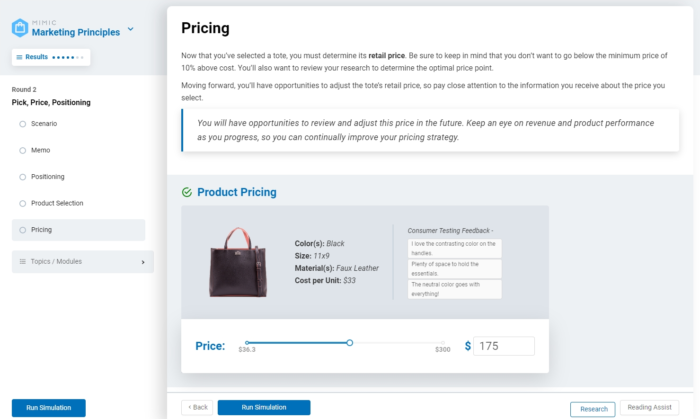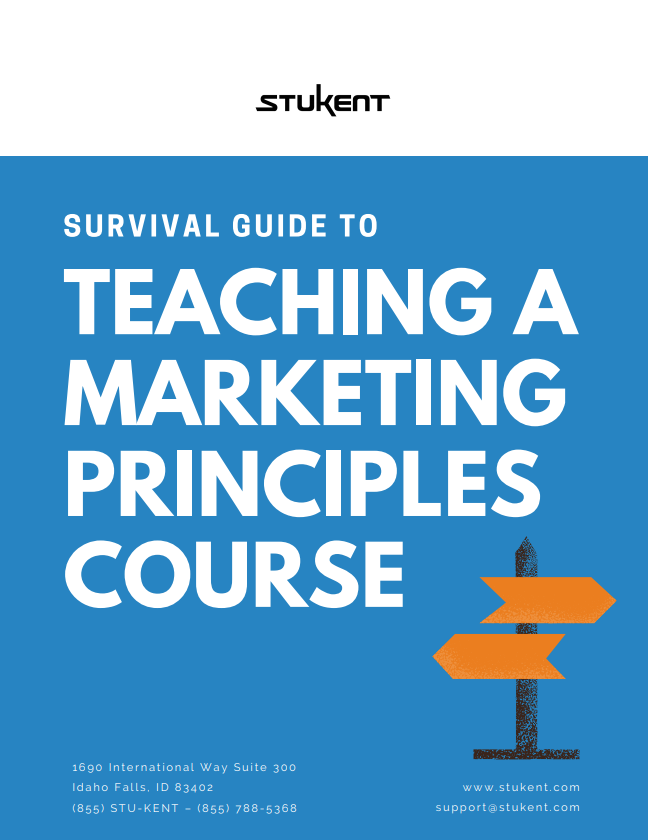When someone tells you teaching is an easy job, you can be sure of one thing: That person has never been a teacher. The rest of us know teaching can be one of the most difficult, demanding, hair-pulling jobs on the planet. We also know it is one of the most rewarding.
There aren’t words enough to describe the feeling an instructor gets when a student finally “gets it,” or when a former student says, “Your class changed my life.” Events and comments like those are the fuel that keeps educators in class and doing their best to connect with students who sometimes don’t want to be there.
Like instructors, Stukent knows the goal isn’t just to get students to memorize dates, facts, and names, but to help students understand why those things are important and how to leverage that knowledge. And so Stukent keeps the company mission squarely in focus: helping educators help students help the world.
Many of the difficulties instructors face apply to any subject taught. In this case, attention is given to marketing principles. It is a topic some pupils are wild about. For others, it’s just one more on a long list of graduation requirements or a class that fits their schedules. But by identifying potential rough spots and stuck places on the road ahead, tactics can be used to smooth over difficulties or maybe even turn potholes into opportunities.
Spoiler alert: Stukent has answers you’ve been hoping to find.
Challenge #1: Providing effective group work
The solution: Google executive Peter Norvig said, “When I was in school, working as a team was called cheating.” Thankfully, that’s not the case today. Employers tend to value teamwork and seek to hire digital marketers who can fit in and work well with others. That’s why Stukent makes room for group activities in the digital Marketing Principles Bundle that combines a simulation and courseware.
Instructors who choose the bundle get a host of options for getting students engaged — both for group projects and personal work. Those hard-to-reach students who don’t want to do the work themselves often come to life and get motivated … especially when their teammates are not only helping them gain understanding but counting on them to hold up their end of the assignment.



Challenge #2: Helping students understand the importance of the 4 Ps of Marketing
The solution: The 4 Ps of Marketing are more than a clever acronym, they’re foundational to marketing theory and practice. Most of us have suffered through classes that required the rote memory of dates and terms that didn’t seem to make sense in the real world. After all, aren’t the 4 Ps — Product, Price, Place, and Promotion — fairly evident in the first place? The concept can seem dull and a bit too basic.
To turn this problem on its head, the first requirement is that the instructor shows enthusiasm for the 4 Ps. Treat them like a precious gem so that students will be anxious to find out what they are and how they work.
Next, show the class some real-life examples of the 4 Ps in action to illustrate their deployment. The Marketing Principles Bundle, for example, includes assignments meant to draw interaction and video case studies that provide visual contact with real companies. In addition, students can practice applying their knowledge of the 4 Ps in the Mimic Marketing Principles simulation. In the simulation, students launch their own go-to-marketing strategy — including picking the right product, determining optimal pricing, assuring proper placement, choosing distribution channels, and selecting the promotions they wish to employ. Students manage a budget all along the way as they walk through the components of an actual marketing campaign.

Challenge #3: Keeping all marketing principles students — even those not marketing majors — engaged
The solution: Maybe the word on campus is that your classes are not only valuable but fun. Or maybe you’ve built a reputation for helping students realize their potential and get hyper-engaged with the work. Maybe your class was the only choice left for most sophomores this year, and many of the students on your roster couldn’t care less about marketing. Either way, your job is to help them all gain a working understanding of the principles of marketing.
Some instructors may address the problem by teaching marketing fundamentals to all students while providing access to advanced material that gives marketing majors a more challenging option (and may provide extra credit).
Others may teach to the marketing students and let the rest of the class figure it out or drop out — their choice.
But there is a third option, and it’s the one taken with the Marketing Principles Bundle: draw every student in. Don’t leave anyone behind. How can that be accomplished? The first step is to present and illustrate the idea early on that everyone who works for a company, regardless of the job title, is part of the marketing effort — though the employer will rarely stress that fact. Consequently, those who know and practice the principles of marketing will stand out in the crowd and will very likely be promoted over coworkers who do not understand the topic.
To quote from the Modern Marketing Principles courseware:
[M]arketing is not simply a box on the corporate organizational chart or a department of the company. Rather, it is part of the corporate culture and has the greatest impact when everyone in a firm sees themselves as part of the marketing effort. When, whether employees are in accounting, manufacturing, finance, or some other parts of the organization, they all take a holistic view of marketing. When they recognize that even though they may not have the word “marketing” in their job titles, they have a role to play in helping the company promote its goods and services.
The more employees know about marketing, the smoother things can go for them on the job, whether they consider themselves “marketers” or not. More than 80 percent of students surveyed, regardless of major, said they would recommend the Stukent simulation to their peers.
Challenge #4: Finding updated marketing principles resources without having to spend days or weeks
The solution: This problem is easy to fix. Get access to the Marketing Principles Bundle. How does that help? It is like having a personal assistant who gathers materials you’ll need to teach the course — quizzes, tests, projects, and even videos of marketing professionals giving their best advice — someone who supports you every step of the way. How helpful would that be?
Next, download the “Survival Guide to Teaching Marketing Principles.” It is a 28-page PDF guide with resources.
The bottom line: Stukent has you covered.
Get the FREE Survival Guide
28 pages of everything you need to teach the best marketing principles course.
What's inside the Survival Guide?
- Free 28 page guide in PDF format sent to your inbox
- Dramatically increase student engagement
- Adapt courses for online & hybrid with links to tons of resources and tools
- Create relevant learning objectives to prepare students for the real-world
- Find inspiration including assignments, projects, tools, videos, and more
- Learn how a marketing principles simulation might fit in your course

Challenge #5: Instructing a large number of students in class
The solution: The Mimic Marketing Principles simulation, which is part of the overall bundle, can handle every student in even the largest classes. It’s not just a “keep them busy” sort of resource, though. Students get a taste for what it’s like to be part of a real-life marketing team. They are tasked with:
- performing primary and secondary research
- developing a positioning statement
- selecting products and setting pricing
- creating promotions
- developing an advertising mix
- setting up distribution channels
- managing a budget
- leveraging analytics to optimize campaigns
The simulation is formatted to engage every student in your class and help them develop real-world marketing skills. Also, the Mimic Marketing Principles Simulation is auto-graded — you won’t have to spend hours and hours going over one exam after the other. In addition, regular updates to the courseware provide fresh questions for each topic covered.
Teaching Marketing Principles the Easy Way
To learn more about the Marketing Principles Bundle, schedule a demo with a specialized course consultant. The Stukent staff is here to help you help students help the world. You take your work seriously. We do too.







